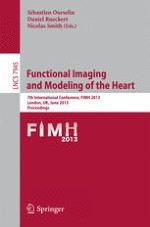2013 | Buch
Functional Imaging and Modeling of the Heart
7th International Conference, FIMH 2013, London, UK, June 20-22, 2013. Proceedings
herausgegeben von: Sébastien Ourselin, Daniel Rueckert, Nicolas Smith
Verlag: Springer Berlin Heidelberg
Buchreihe : Lecture Notes in Computer Science
